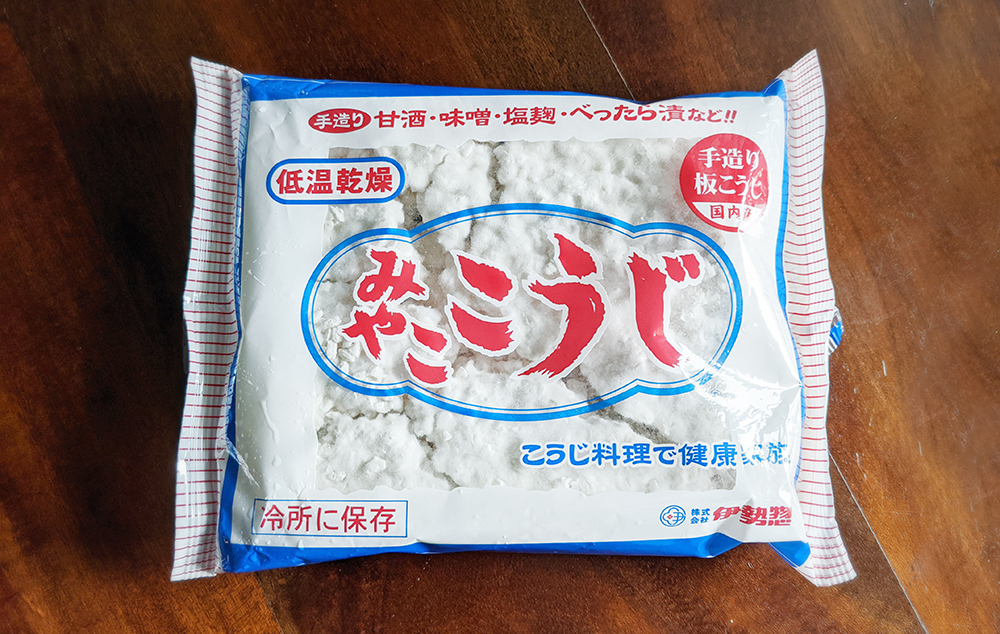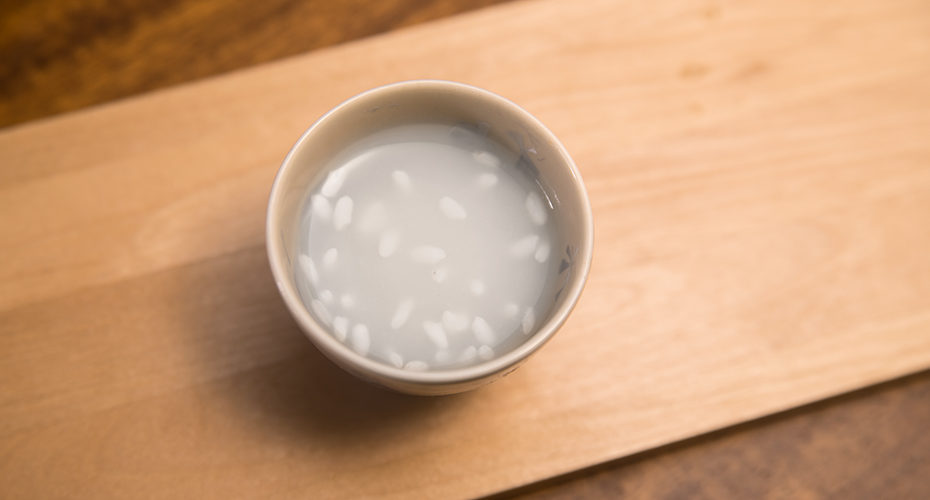Amazake is sweet, delicious, and nutritious. This post briefly introduces this ancient Japanese rice drink and provides an easy alcohol-free amazake recipe you can make at home.
I include several links to useful items from making amazake. As an Amazon Associate, I earn commissions from qualifying purchases through these links. It also supports this blog.
What is Amazake?
Amazake (甘酒) is a sweet rice drink. The word translates to “sweet sake,” but it’s not sake at all. It’s similar to porridge and has a creamy texture with a sweet flavor.
There are two classic ways to make amazake.
One uses rice koji, cooked white rice, and water. Making amazake this way produces no alcohol. And it’s also loaded with health benefits. In this post, you’ll learn how to make homemade amazake in this manner.
Another common method for making amazake involves mixing sake lees (kasu), sugar, and water. This method produces an alcohol content of around 8%.

How to Make Amazake
There are several ways to make amazake and two primary styles. Below I’ll discuss making alcohol-free amazake using koji rice.
This method requires careful temperature control. But the results are flavorful, free of alcohol, and full of health benefits.
Amazake Recipe
Only three ingredients are required to make this recipe: white rice, dry koji, and water. The tricky part is maintaining a constant temperature. The enzymes from the koji work best between 125 and 140°F (50-60°C).

Easy Alcohol-Free Amazake Recipe
- 1 cup uncooked rice
- 1 cup dry koji
- 3 cups water
The first step is to cook the white rice. A rice cooker makes this super easy. After that, combine the ingredients and mix them thoroughly.
The next step is to keep the mixture around 140°F for 10-12 hours. A rice cooker or water heater with temperature control, a sous vide, or a well-insulated thermal bottle will all work.
I like using my Thermos. Tightly sealed, it maintains its temperature for close to 24 hours. It’s ideal for this recipe but not for larger batches.
I mix the ingredients in a sterilized mason jar. Then place the jar in a hot water bath until the mixture is around 150°F. I also preheat the Thermos with water. Once everything is up to temperature, I drain the Thermos and add the amazake mixture.
After 10 to 12 hours, it’s ready to serve. Store the amazake in a refrigerator. It can be served cold or warm. A bit of grated ginger on top is very popular.
I learned this method from the Handbook of Making Sake, Shochu, Koji, Amazake, Miso, Natto, Mirin, and More by Shoichiro Nakamura. The author includes a cold-brewed method of rice koji amazake which I will try next.
Potential Pitfalls
There are a couple of things you want to watch out for when making amazaki.
One mistake I made at first is to heat the mixture too much. Temperatures above 140°F limit the koji enzymes. If you go much higher than this temperature, even briefly, the enzymes will be weak and you won’t produce much glucose.
Another possible issue is fermenting the amazake too long. If it’s not right after 10-12 hours, more time will not improve the batch. Instead, you can get cooked notes. And lactic acid can also build up, leading to a sour taste.
And lactic acid will also build up if the temperature of the mixture is too low. The result of this can be a sour, funky amazake.
Using Sous Vide for Making Amazake
Using a sous vide for making amazake is precise and easy. This is an excellent method for making larger amounts of amazake too. You can heat the amazake directly with the sous vide, or place the amazake in a bag inside of a hot water bath.
I recommend using the latter method. This will prevent evaporation from reducing the liquid. If you opt to heat the amazake directly, a container with a lid will help prevent excessive evaporation.
What do You Think About Amazake?
I didn’t grow up drinking amazake. Only later in life was I introduced to it. Did you grow up drinking amazake?
Also, do you have a favorite amazake recipe you’d like to share? Please share your thoughts by commenting below.
